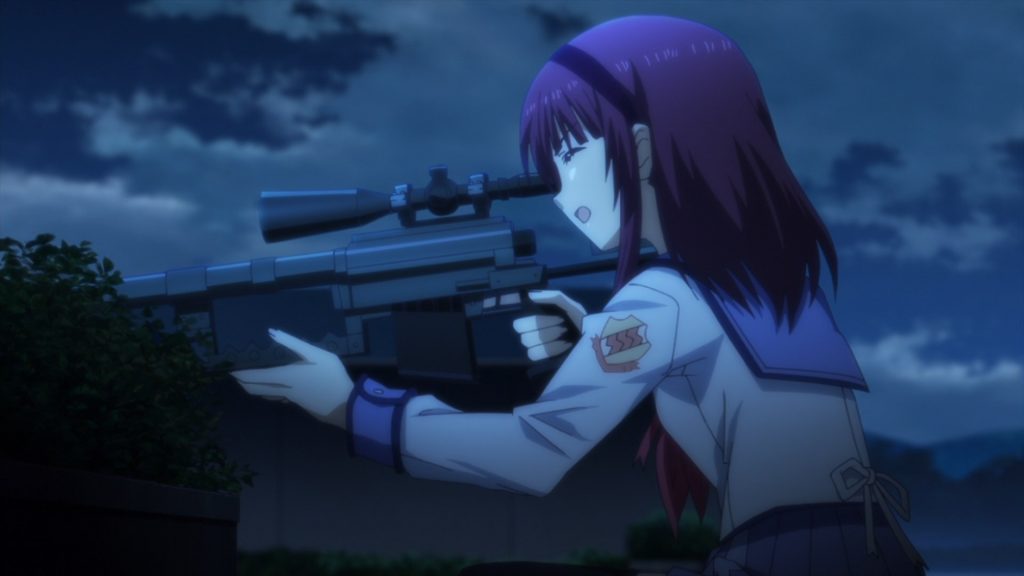If you ask certain anime thought leaders throughout the last decade and a half or so, moe has been “killing anime.” Indeed, according to some, plague of cute girls descended upon the medium in the mid-2000s, leaving the anime industry a barren wasteland.
Is moe killing anime? What’s the damage? How do we measure that?
Anime fans speak of a “moe boom” occurring some time in the mid-2000s, though the exact year depends on who you ask. Though cute girls have been a staple of anime since the medium’s infancy (including eras many anti-moe people hold up as superior times, devoid of moe) for the sake of argument, we’ll use the year 2006 as the start of the moe boom, coinciding with the TV broadcast of The Melancholy of Haruhi Suzumiya.
Let’s Do The Numbers

Looking at the numbers, the anime industry has been on a steady upward trend since 2006. Though its 2008 high wouldn’t be met again until 2013, it’s seen nothing but growth since 2009, breaking the 2 trillion yen mark in 2016 and continuing to grow through 2018.
The industry’s not only managed to sustain itself through the moe boom into the 2010s, it’s managed to grow by just under half its 2006 market cap, adding 651 billion yen in the ten years between 2006 and 2016.

Not only that, but the number of new TV anime has seen growth as well. A steady decline between 2006 and 2010 shifted to steep growth from 2011 all the way up to 2016. Fans might remember 2011 as the year of Madoka Magica, Infinite Stratos, AnoHana, and the iDOLM@STER TV anime, to name a few.
Let’s take this a step further, though, and say that we’re also under the false assumption that “the anime industry” only refers to the studios hired to make anime.

Our 2006 “moe boom” puts us on the start of a downward slope ending in 2009 and falling a total of 41 billion yen. Folks might remember that studio Gonzo famously posted an insurmountable deficit in their 2008-2009 term that nearly killed the studio outright.
Since 2009, however, the market cap for anime studios has grown steadily, keeping pace with the rest of the anime industry.
How Else Can The Industry Die?
An argument can be made that the increased number of anime made contributes to the overwork of animators and is an unsustainable growth model for the industry. That the rush to make so much moe anime does active harm from a standpoint of pumping out cheap, “cynically created” anime to try and capitalize on the trend.
It’s not a good argument, but it’s an argument worth addressing.
There’s a school of thought within the anime community that likes to see anime as a zero-sum game, where one anime someone dislikes getting made equals one anime someone likes not getting made.
Further, many of these people put link value-judgments to their own preferences. Meaning, suddenly, the anime they like is “good” and the anime they don’t like is “bad,” from a quality point-of-view.
As a result, to them, the anime industry is deliberately making “bad” anime, hoping to make a quick buck on it, when they could be making “good” anime, which to people with this mentality is guaranteed to sell.

Not only does that show a lack of understanding of how the industry works, it doesn’t pan out when looking at statistics. Half of the anime with the highest average sales can be considered “cute girl anime” on one level or another. The same is true when looking at anime with the highest total sales, and when looking at anime with the highest first release gross.
The fact is there’s nothing about moe in particular that produces any higher or lower frequency of mediocre, forgettable shows than any other trend in anime. There were plenty of also-ran super robot anime in the ‘70s, plenty of also-ran real robot anime in the ‘80s, and there are plenty of also-ran cute girl anime throughout the 2000s and 2010s.
It all comes down to taste.
No Accounting For Taste
Some people don’t like moe, and that’s fine. Where it starts to become a problem is when people see fit to lie to people with remarks like how moe is “killing anime.” It’s propaganda, meant to cast anime they don’t like not only in a bad light, but as an antagonist to the industry itself.
People complain about a lack of variety, but don’t take it upon themselves to support the anime they like, because they find negativity easier to articulate than positivity.
This is where the “moe is killing the industry” argument fails: If there wasn’t a pattern of consumer response involving moe, there would be no incentive at all to continue making it at scale. There are a lot of people involved with the anime industry whose entire careers revolve around knowing what people will respond to.
If moe correlated to a negative effect on the industry, they would find what consumers do respond to and shift toward that.
